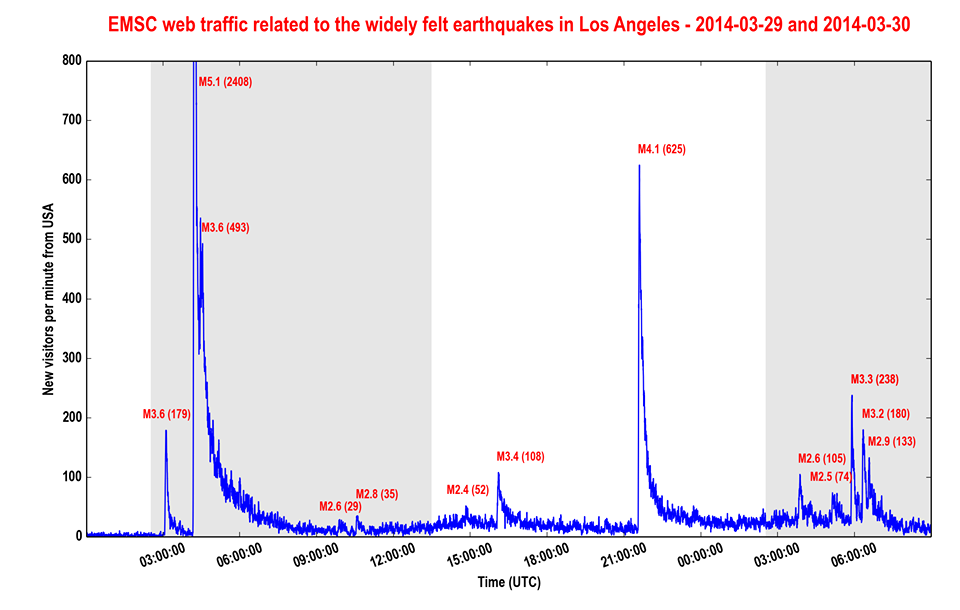The ever increasing use of mobile phones constantly connected to the internet is bring on a new era in scientific research called crowdsourcing. On Wikipedia crowdsourcing is the defined as the practice of obtaining needed services, ideas, or content by soliciting contributions from a large group of people, and especially from an online community.
In recent years social media is being used as a real-time earthquake alert mechanism and disaster response. A case in point is the use of Twitter. People are increasingly becoming more expressive about their daily activities and tend to post immediately any ‘extra ordinary’ life experiences such as an earthquake. Along with these textual or photographic posts comes through hidden, important information such as the time and geographic location of when the post was sent. Several scientific researches have used Twitter for the purpose of real-time earthquake detection, for example: Sakaki et al., 2010, Earle et al., 2010, Crooks et al., 2013.
Earthquake in LA
Last month California was under (or on top) of a series of earthquakes. Shaking was captured live on TV during a news broadcast.
Many have used the internet to search for scientific information about the earthquakes either by visiting the USGS website or other websites such as the EMSC:

Internet quake detections at EMSC. Internet activity at EMSC following earthquakes in Los Angeles.
…while others took on to Twitter to report their experience, including celebrities. The USA media went into a frenzy with reporting about the tweeted reaction of worldwide famous movie stars and artists. So what did the celebrities say after all?
Paris Hilton: OMG! Did anyone just feel that Earthquake? So scary, woke me up out of an already scary nightmare. I hate earthquakes. 🙁
Kim Kardashian: Earthquake was scary? Were all ok though! Anyone else feel it?
Hilary Duff: Good morning guys! We are all safe! Hope everyone else is too❤️not the most pleasant way to wake up with everything shaking
